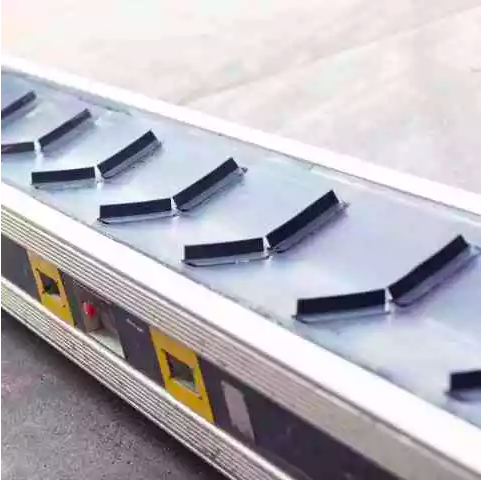- Amanda
- April 30, 2019
Can conveyors go around corners?

People often rule out using conveyors for an application because the route has a bend in it. And conveyors have to go in straight lines – don’t they?
Well, the answer is ‘not necessarily’.
First of all, it depends on whether you’re talking about corners turning left and right or corners turning up and down.
Turning sideways
If a conveyor has a belt then it can only go forwards. That’s just the way they’re constructed and it’s unavoidable. And a long conveyor is brilliant for moving material in a straight line.
If you want to go around corners, to the left or right, then you simply need more than one conveyor. In most situations, a conveyor can discharge onto another conveyor at any angle. We’ve had applications where our conveyors almost have to double-back on themselves to get around a corner.
Setting up a series of conveyors means your material can travel a long, zig-zagging path around buildings or equipment and through windows via a series of conveyors all discharging from one to the next.
Turning up or down
In the same way as for turning sideways, it’s usually straightforward to set up a series of conveyors discharging from one to the next at different inclines. This is useful to move material up or down a hill or out of a large basement project, for example.
In addition, in certain circumstances we can construct an Easikit conveyor with an angle in the frame so that it can bend from an incline to horizontal. This would typically be an option for permanent installations though, rather than temporary, or short-term rental jobs.
You may need a ‘built in’ bend-over section in your conveyor if your application contains the following “must have” criteria:
- The angle of inclination must change from inclined to horizontal and isn’t too dramatic.
- Only enough electrical power for one drive.
- No physical space for a transfer point (a transfer point = 2 x conveyor frame depths).
For large angle changes, it’s probably best to try and go with two conveyors and a transfer point as bending one conveyor beyond around 20 degrees puts major pressure on the belt structure and joint integrity.
Need more help?
We hope this advice has been useful and helps you assess whether a conveyor is right for your next project.
If you’d like to talk to us about a job you need a conveyor for, or arrange a free site visit, please contact us on 0808 278 5220 or email hello@coveya.co.uk.


